20 August
We left Fr. Miguel, Ignacio, and Eduardo in Tegucigalpa, Honduras where they had experienced everything from the beautiful churches to the most impoverished neighborhoods of the city. Everywhere they went, they were blessed by the gracious hospitality and generosity of the people of Honduras.
They made new friends when Fr. Miguel celebrated Mass at the Basilica of Our Lady of Suyapa.
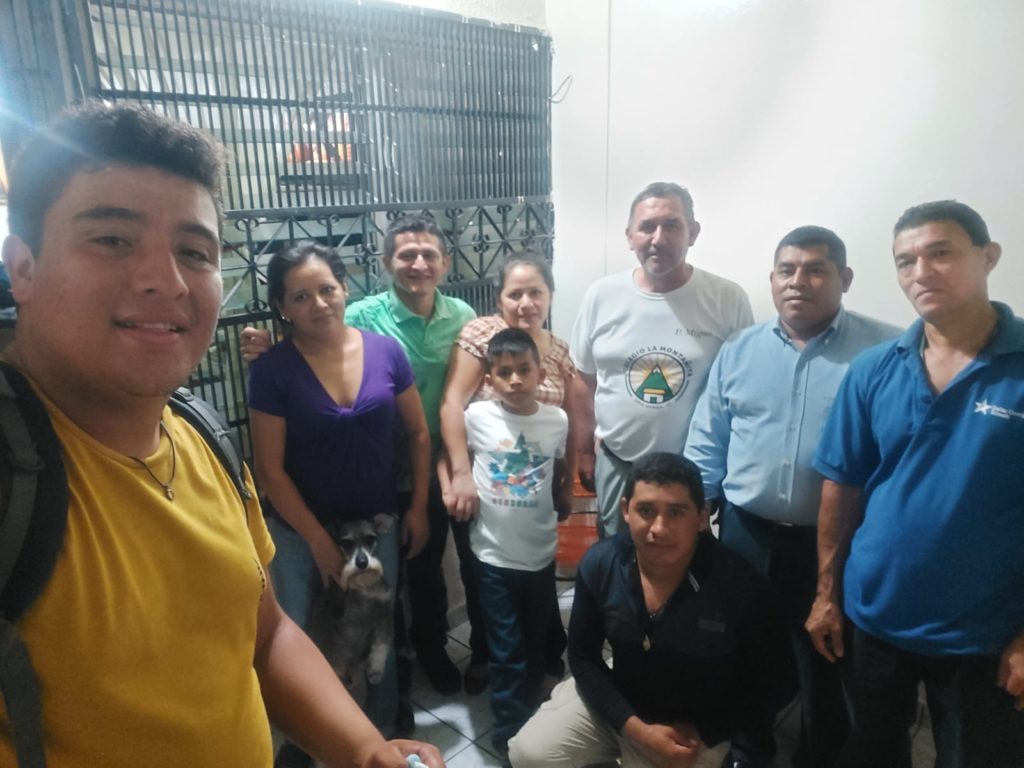
They are very grateful to Francisco Lopez and his family for all they did for the team in Tegucigalpa.
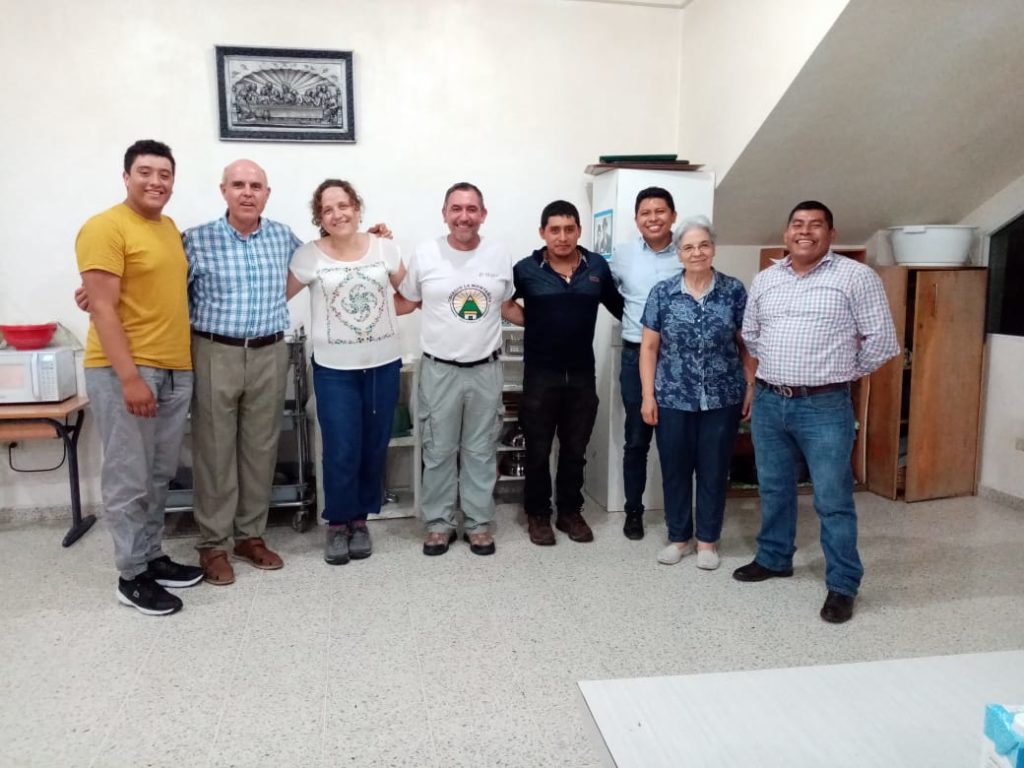
And they especially appreciated the work of Fr. Patricio and his team at the Saint John the Baptist Children’s Center. Fr. Patricio graciously invited the team to stay in Tegucigalpa and learn from his experience with the school. Perhaps he could teach us some things that might benefit Fr. Miguel’s work with The Little Mountain School back in Guatemala.
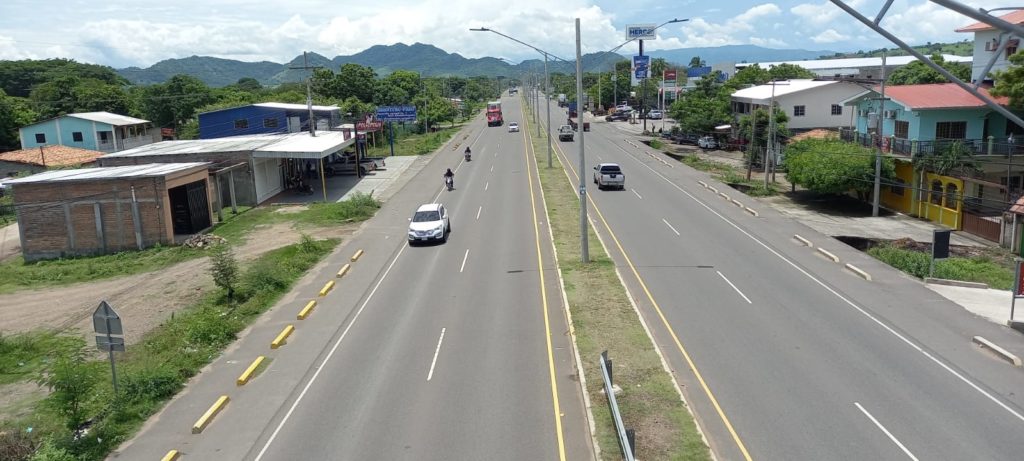
On Friday, the team left Tegucigalpa and headed back toward the Pacific coast.
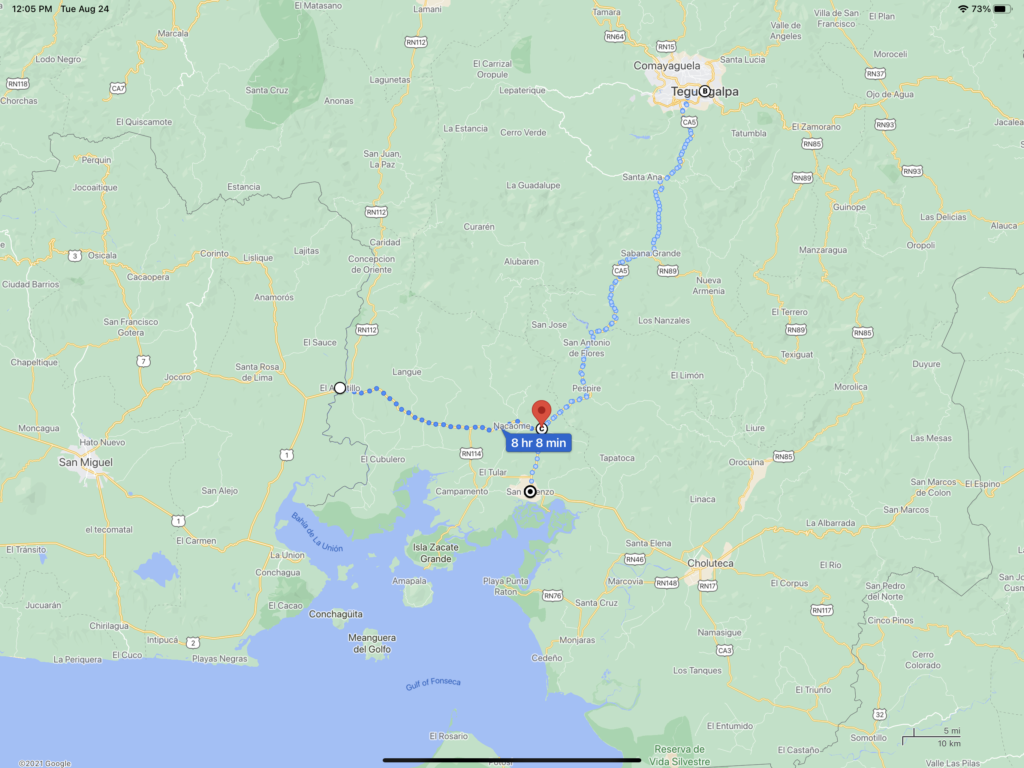
On the way to Tegucigalpa, the road had branched at Jícaro Galan (where you see the red pin on the map). The team had climbed the long road north to the capital on foot over a period of four days. The route to their next destination covered the same road. So they had arranged to take a bus back down to Jícaro Galan and continue on foot southward from there. However, you know what they say about the best laid plans…
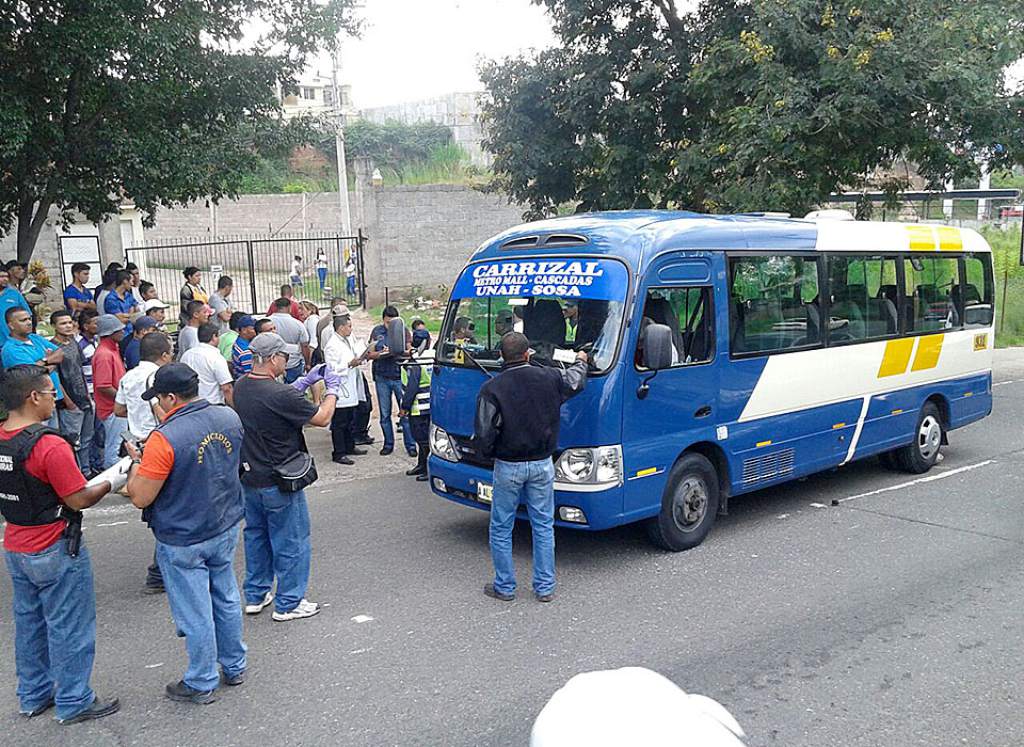
Travel by bus is common in Central America. For a low fare, you can take a rapidito, a minibus. These are much quicker, but also more expensive, than the alternative…
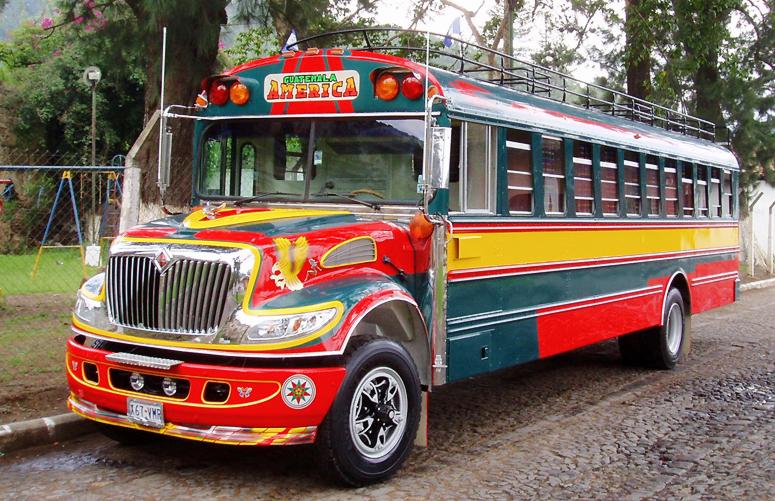
…the chicken bus. Most of these buses are retired American school buses. They are brightly painted, often with religious imagery. They are usually packed with passengers, like a “load of chickens”, hence the name. They stop frequently, so getting to your destination can be a slow process.
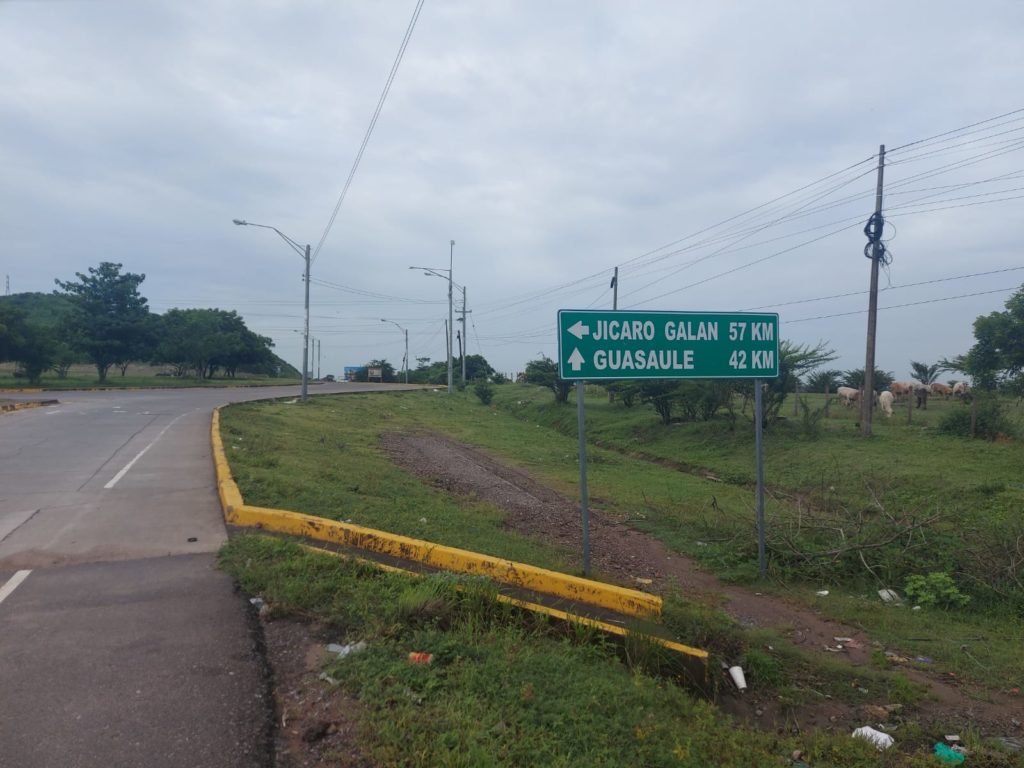
I’m not sure which type of bus was the team’s chosen mode of transport. But their bus broke down on the way and a new bus had to be called in. Fortunately, there was a place to eat nearby while they waited. So they enjoyed an extra leisurely breakfast, which fortified them for the many stops the new bus made en route to Jícaro Galan.
Jícaro Galan is a small village of about 1400 residents. It derives part of its name from this tree, the árbol jícaro, sometimes known as the calabash tree, which is common throughout Central America.
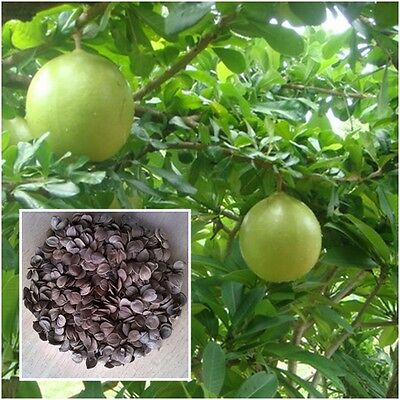
The fruit of this tree are called morros. They can grow up to 20 inches in diameter. The seeds have a sort of licorice flavor and are used in a variety of horchata, a drink popular in parts of Central America. In the countries through which Fr. Miguel is traveling, the term horchata refers specifically to a drink known as semilla de jícaro. The seeds of the morros are ground with rice and soaked in water or milk to make the drink. Depending on the region, other additions may include ground cocoa, cinnamon, vanilla, or various nuts.
Jícaro pods have hard, hollow shells, and are often used to make bowls for drinking horchata.
The pods of the jícaro tree can also be carved or painted to make beautiful rhythm instruments known as maracas.
Once their bus finally arrived in Jícaro Galan, the team set out on foot to cover the 8 miles to San Lorenzo, Honduras’ primary port on the Pacific.
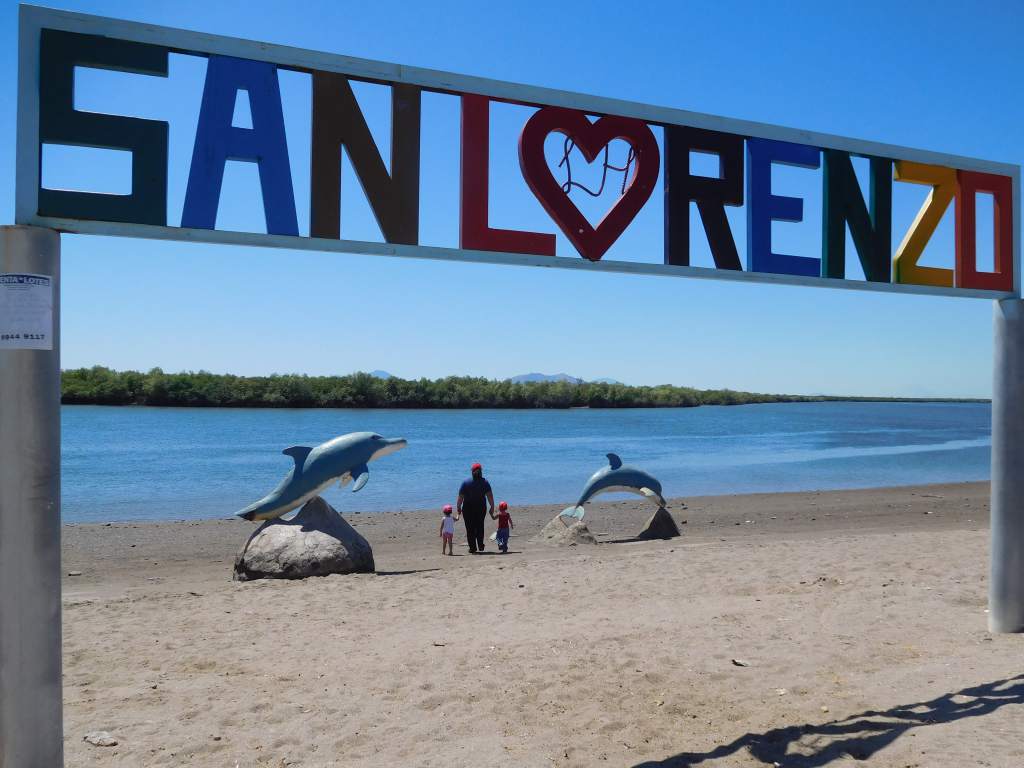
San Lorenzo provides quite a contrast to Tegucigalpa, just 60 miles to the north. It is a modern city of about 35,000 where the “rich and famous” from Tegucigalpa come to get away from it all.
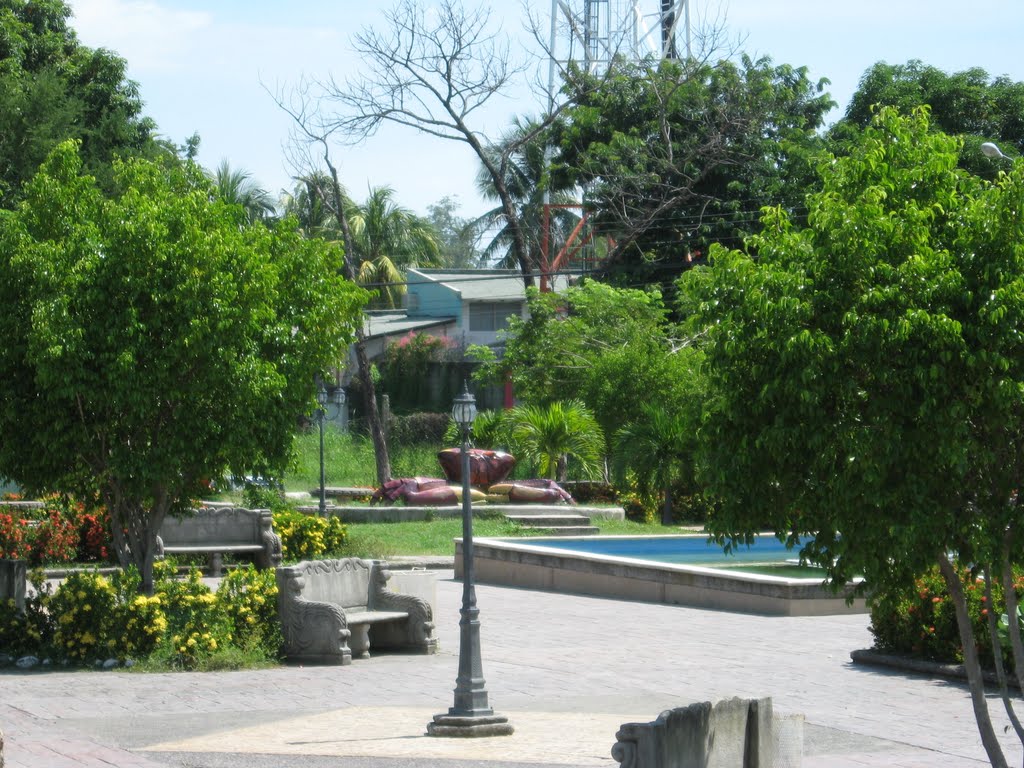
San Lorenzo is one of the most developed cities in southern Honduras. It’s economy is based around tourism, melon farming, shrimping, and the seafood and salt industries. However, fishing in the area has been threatened by pollution of the Choluteca River, which flows from Tegucigalpa into the Gulf of Fonseca.
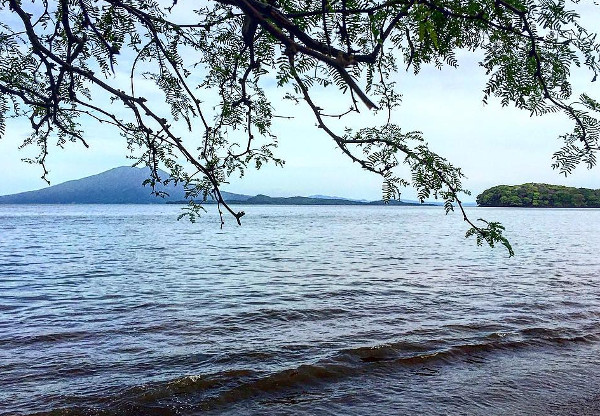
San Lorenzo is situated on the Gulf of Fonseca. The bay was “discovered” by Gil González de Ávila in 1522. He named the area for his patron, Archbishop Juan Fonseca, an “implacable enemy” of Christopher Columbus.
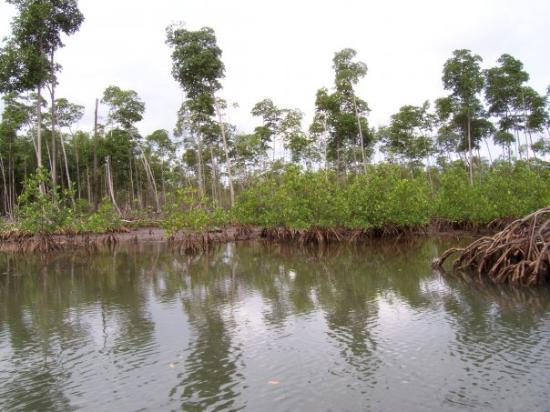
The area around San Lorenzo is known for its mangrove canals that lead out into the Gulf of Fonseca.

The mangrove forests are home to a rich variety of exotic wildlife, making them a favorite location for birdwatching.
Melon farming is a mainstay of the Honduran economy. More fruit from Honduras is bought by the United States than any other country in the world. The majority of watermelons, cantaloupes, and honeydews sold in the United States between November and May are from Honduras and are shipped through the port of San Lorenzo. There are serious questions currently under investigation about the use of forced labor, particularly child labor, and the violation of workers’ rights in the melon fields of Honduras.
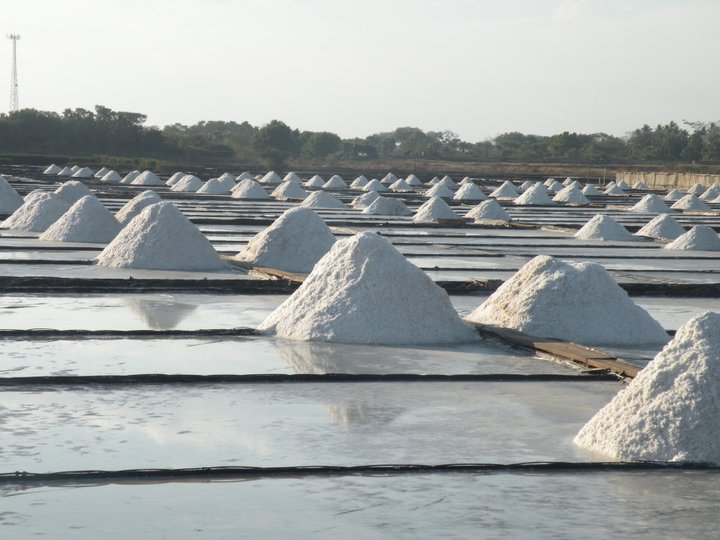
Salt is harvested along the coast of Honduras in evaporation ponds. It is separated by grade, and then sold to fishing vessels, tuna canneries, meat packing facilities, and local municipalities in the United States for road de-icing.
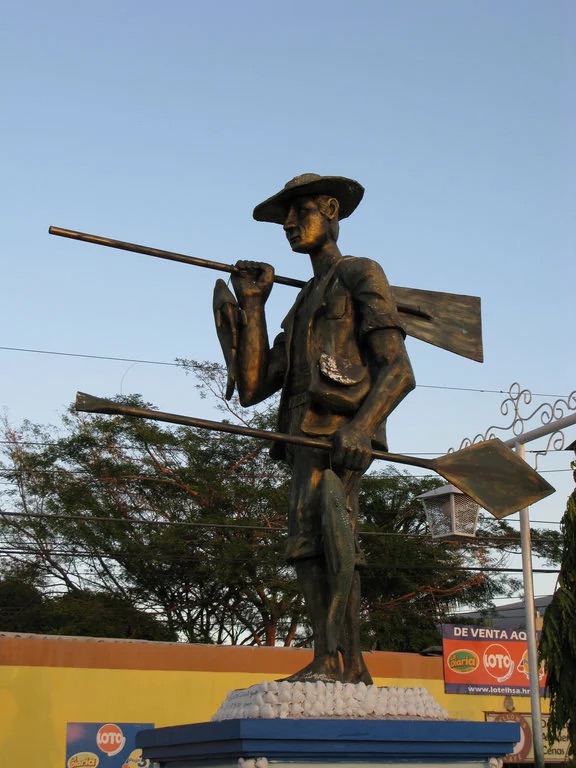
El Pescador (The Fisherman) is one of the iconic landmarks of San Lorenzo.
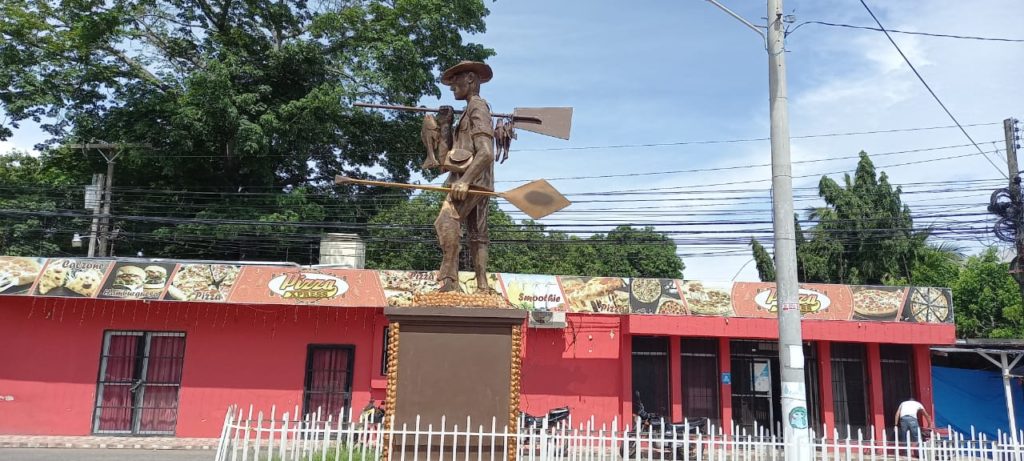
It looks like he’s got some pretty big anchovies for that pizza place in the background!
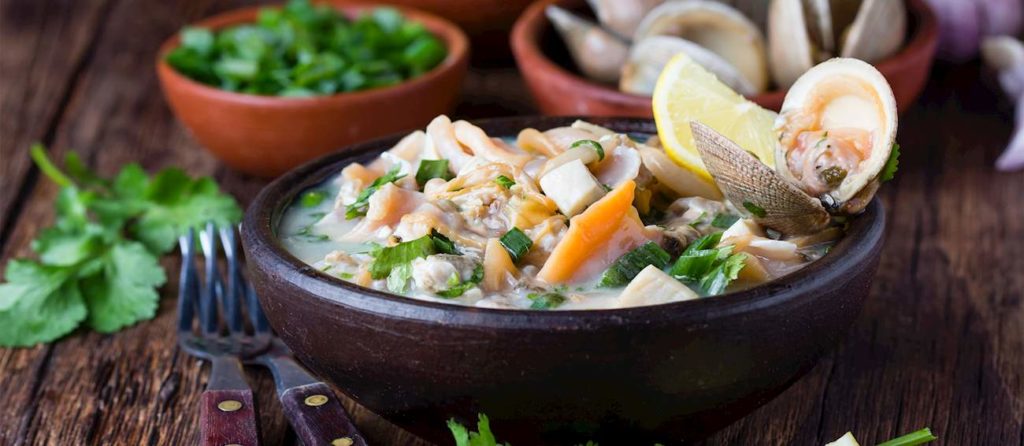
Most visitors to San Lorenzo are eager to sample some of the delicious seafood dishes for which the city is known. A favorite is sopa marinera, a strong, tasty seafood soup made with a variety of seafood, such as fish, crab, and shrimp, along with plantains, cassava, and coriander all cooked in a coconut milk broth.
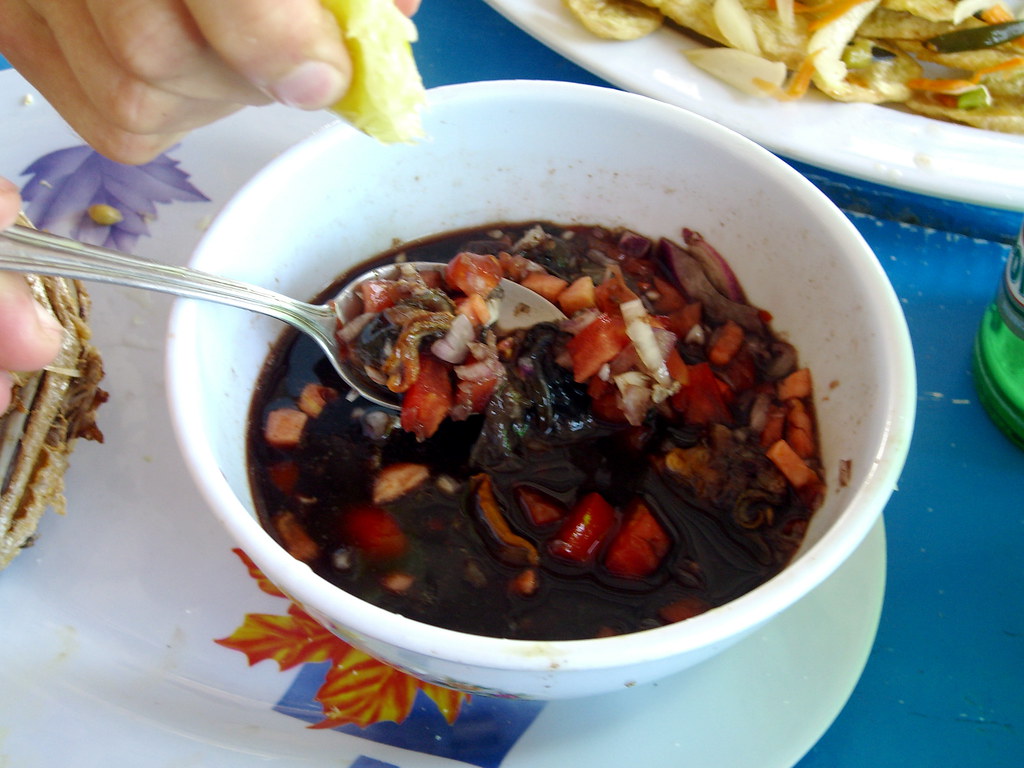
Another popular food item are curiles, a local clam with rich dark blood. They are served raw in their blood, mixed with salsa and lime juice. I hear that they are “yummy”. I’m a bit skeptical….
Central Park is a peaceful oasis in the bustling city.
Throughout the city are a series of parks depicting marine themes. Each park has a statue of a native sea related animal.
And, of course, no visit to San Lorenzo would be complete for our pilgrims without a stop at the beautiful Iglesia San Lorenzo.
We’re all so glad that you are part of the Camino de San José. We hope you’re enjoying the journey. If you’d like to encourage Fr. Miguel by making a donation to support The Little Mountain School in his hometown, Joya Honda, Guatemala, please click the Donate Now button at the top of this page.
We hope you’ll join us again tomorrow as Fr. Miguel, Ignacio, and Eduardo head to Choluteca, Honduras. Until then…
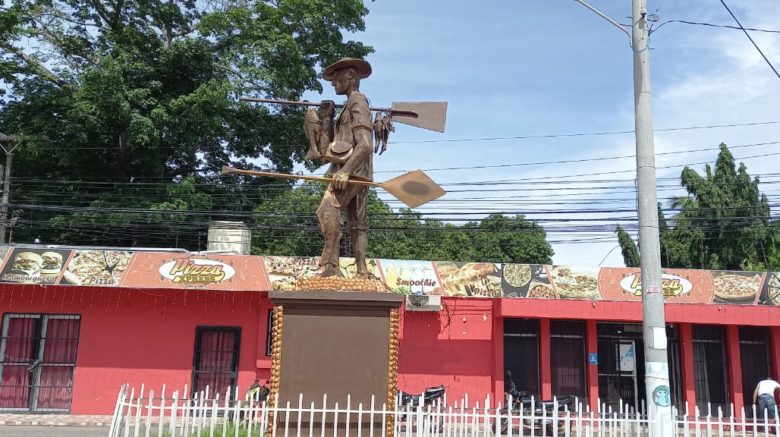
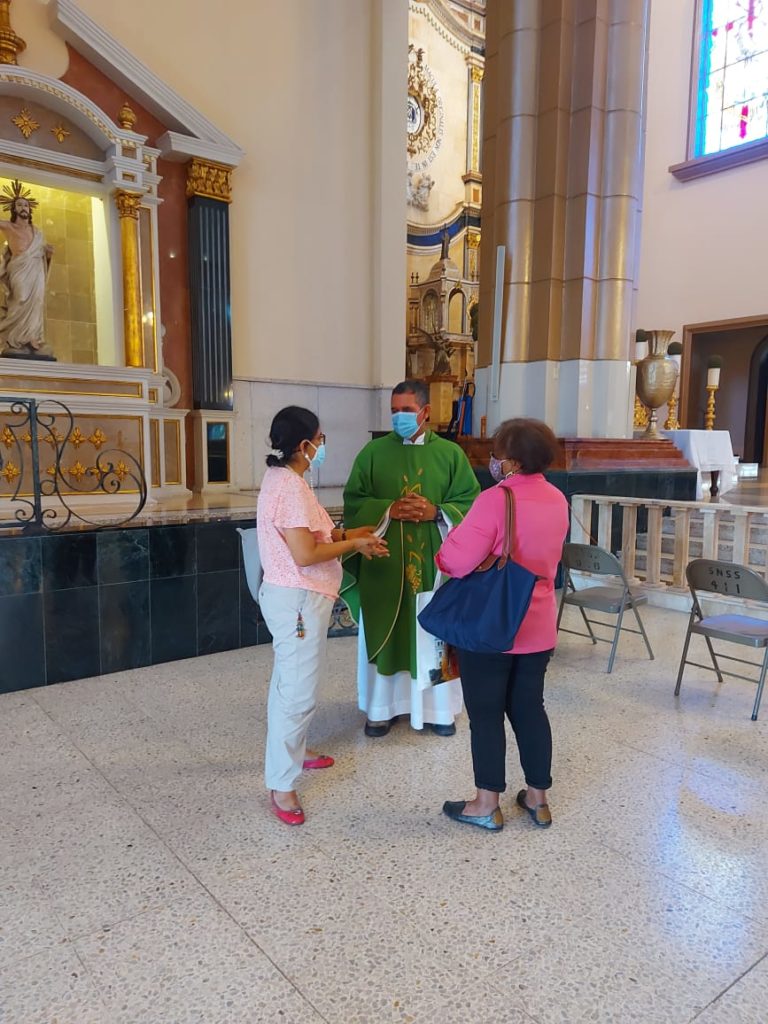
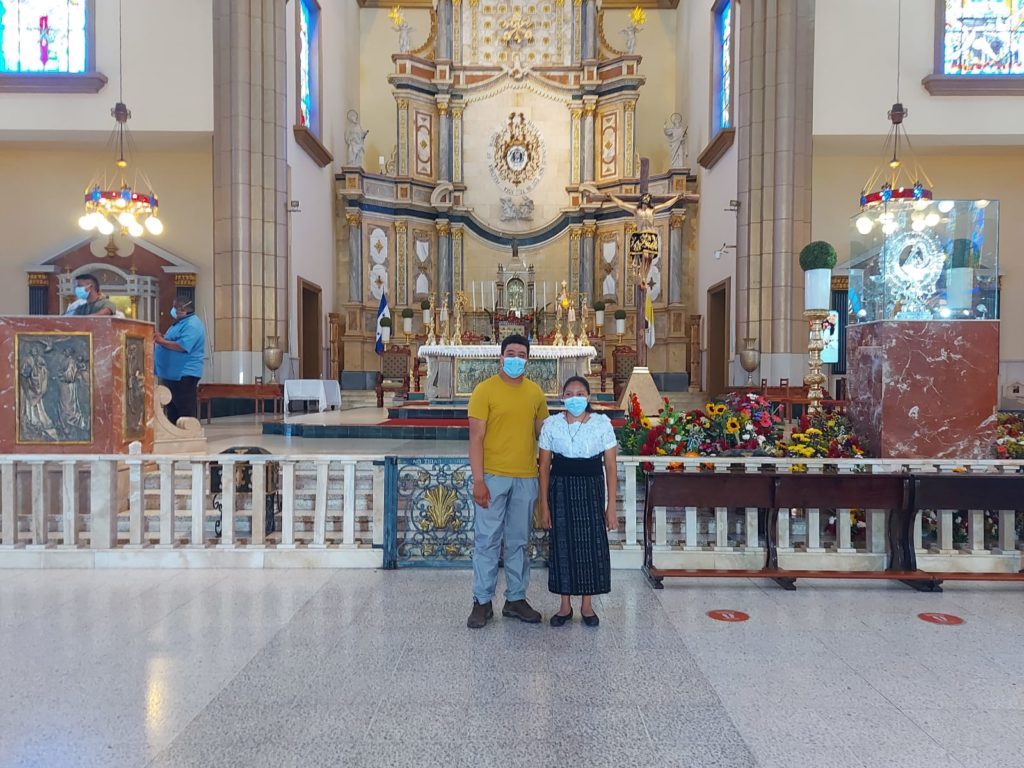
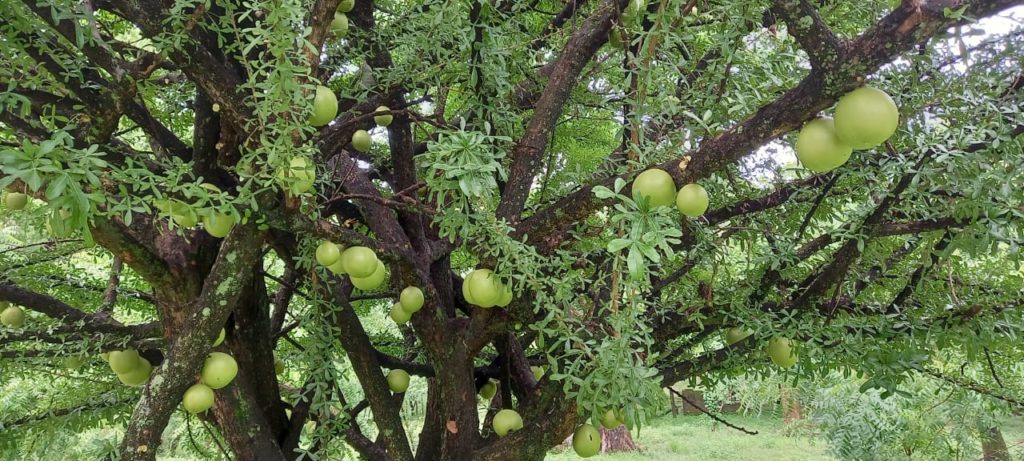
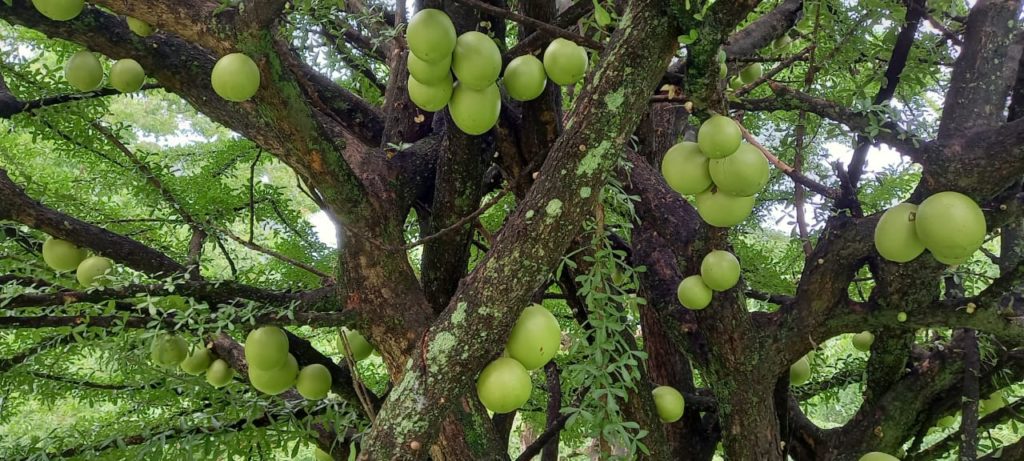
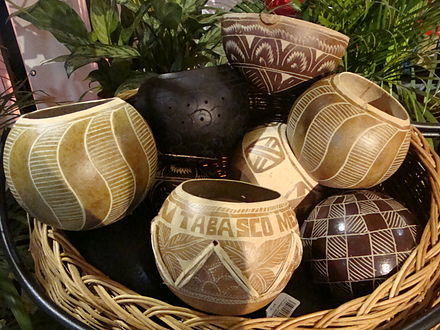
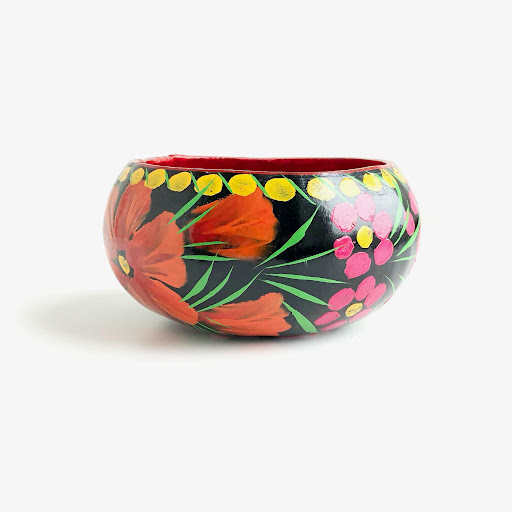
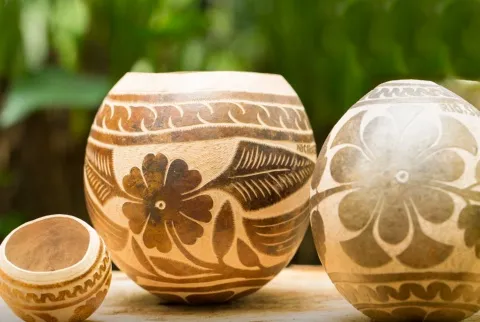
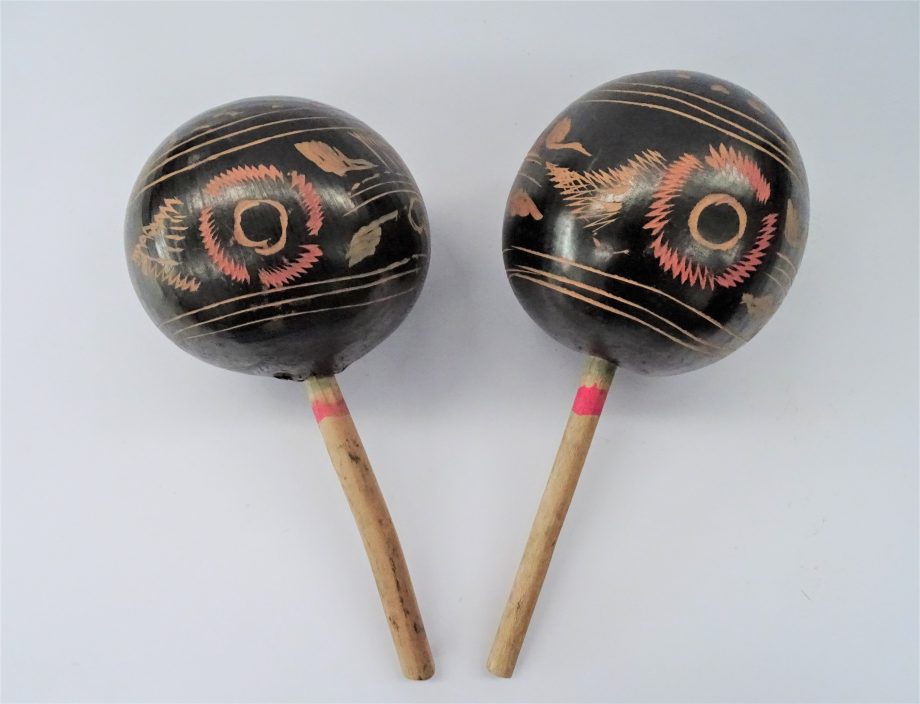
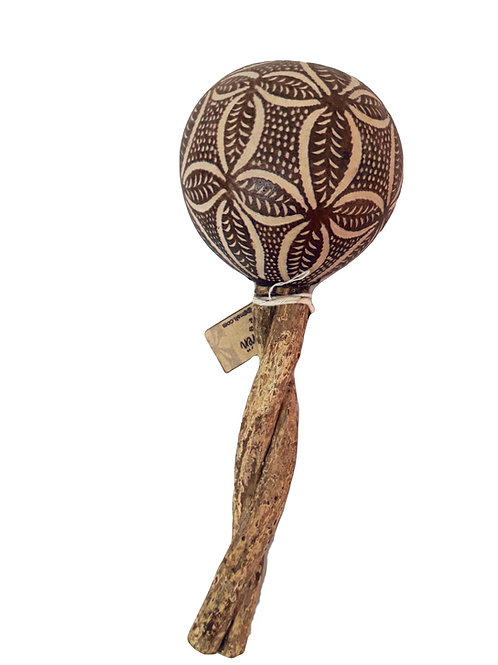
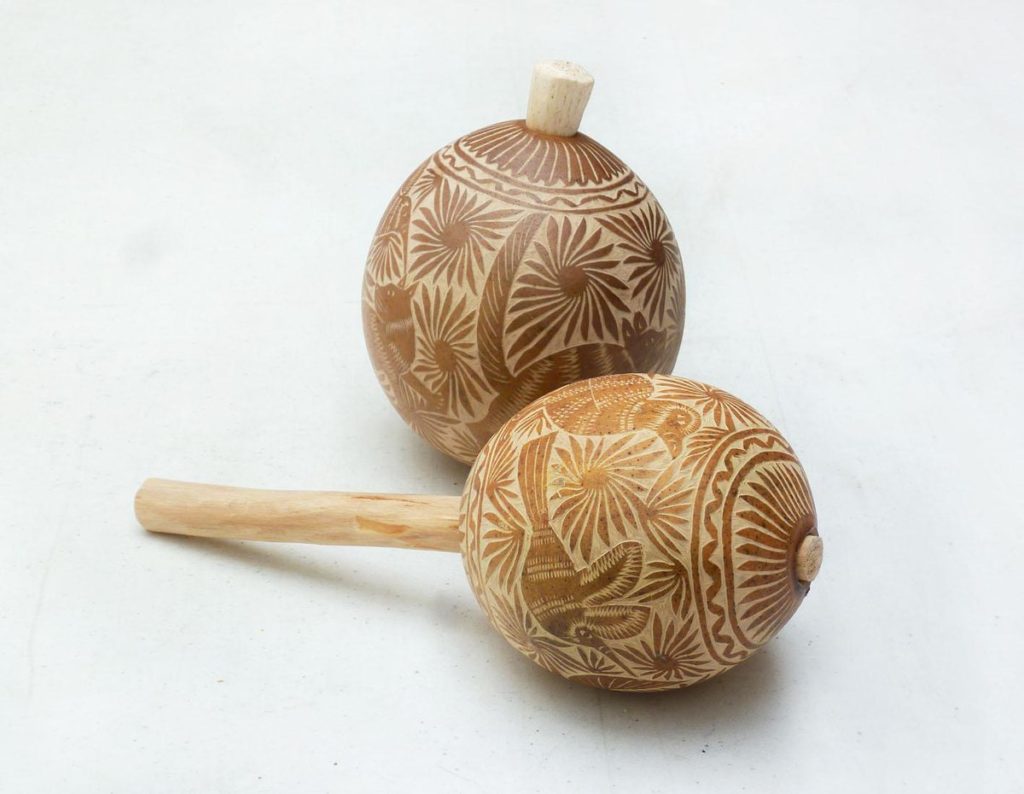
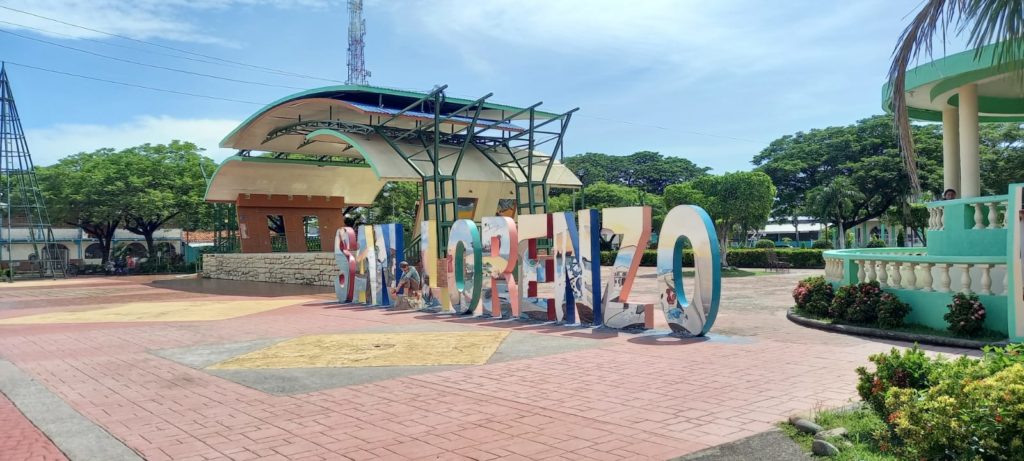
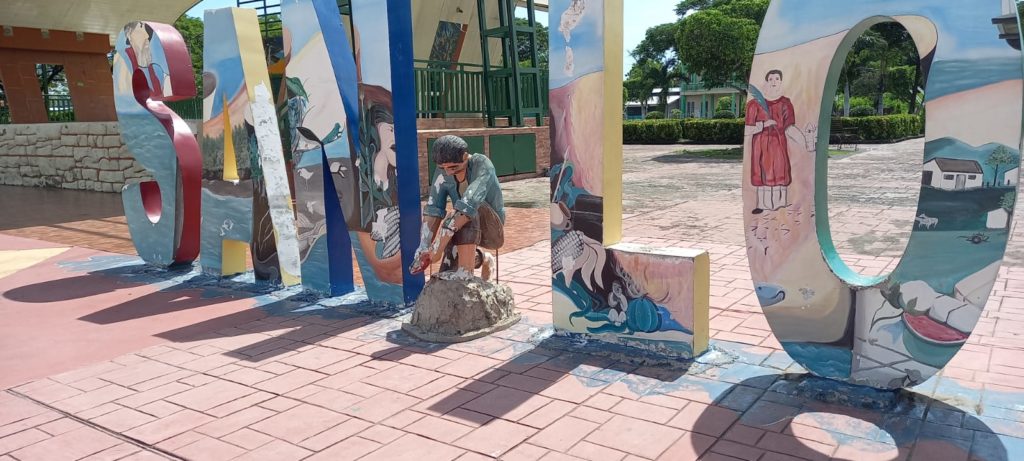
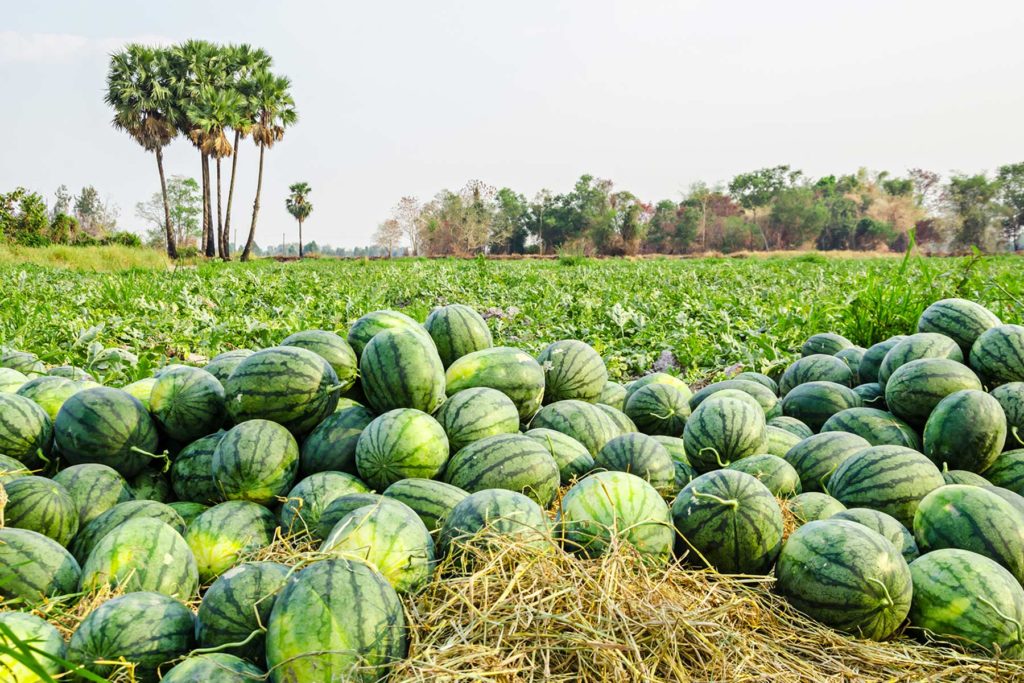
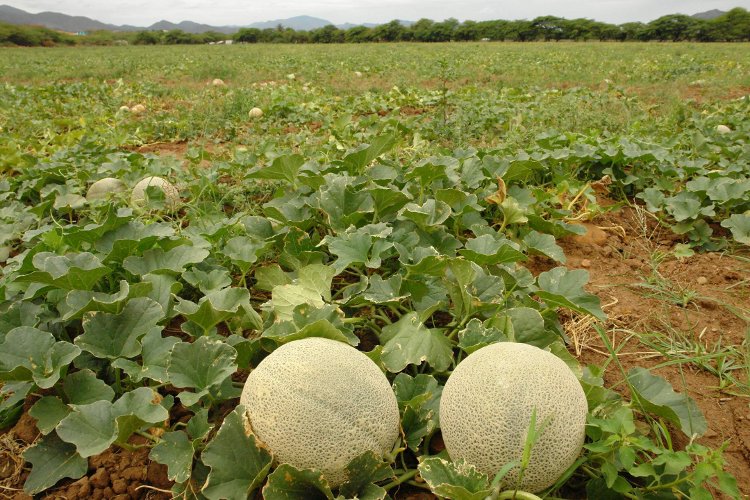
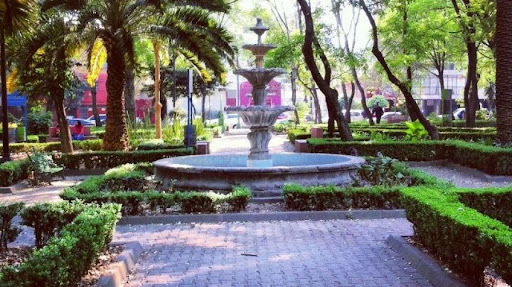
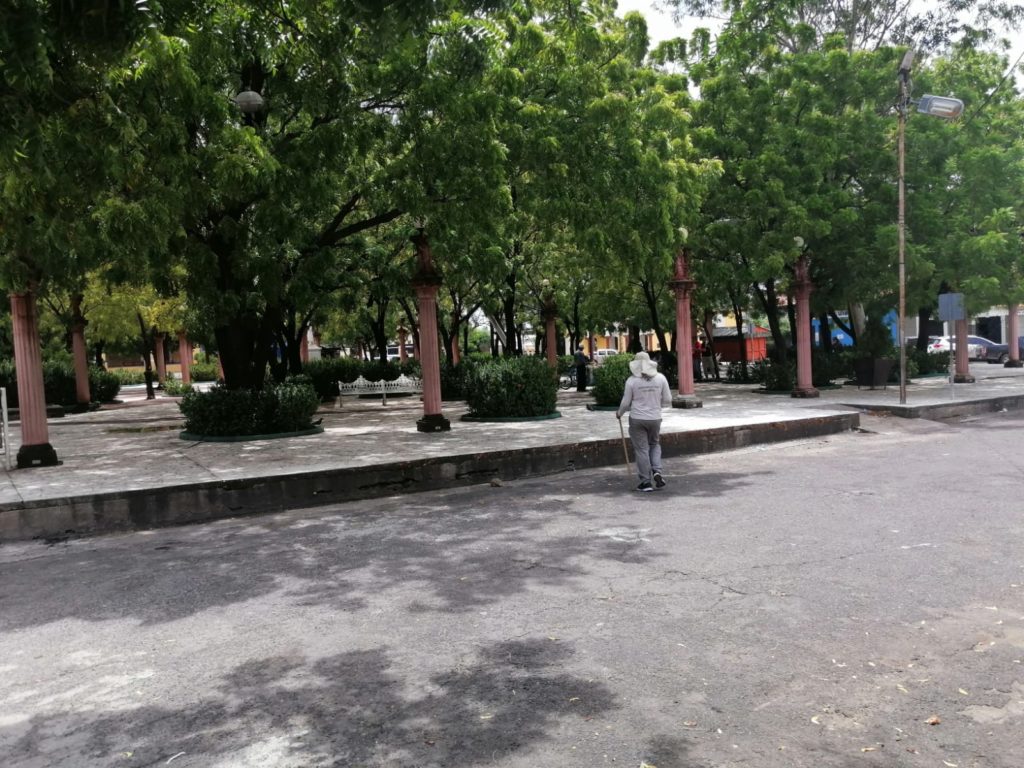
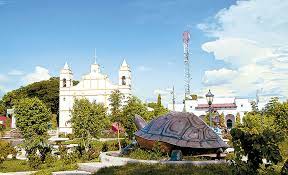
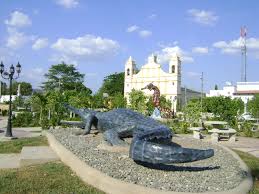
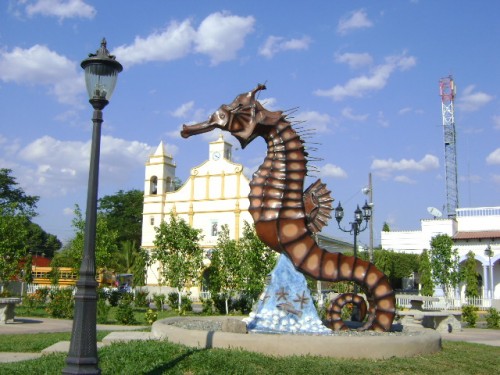
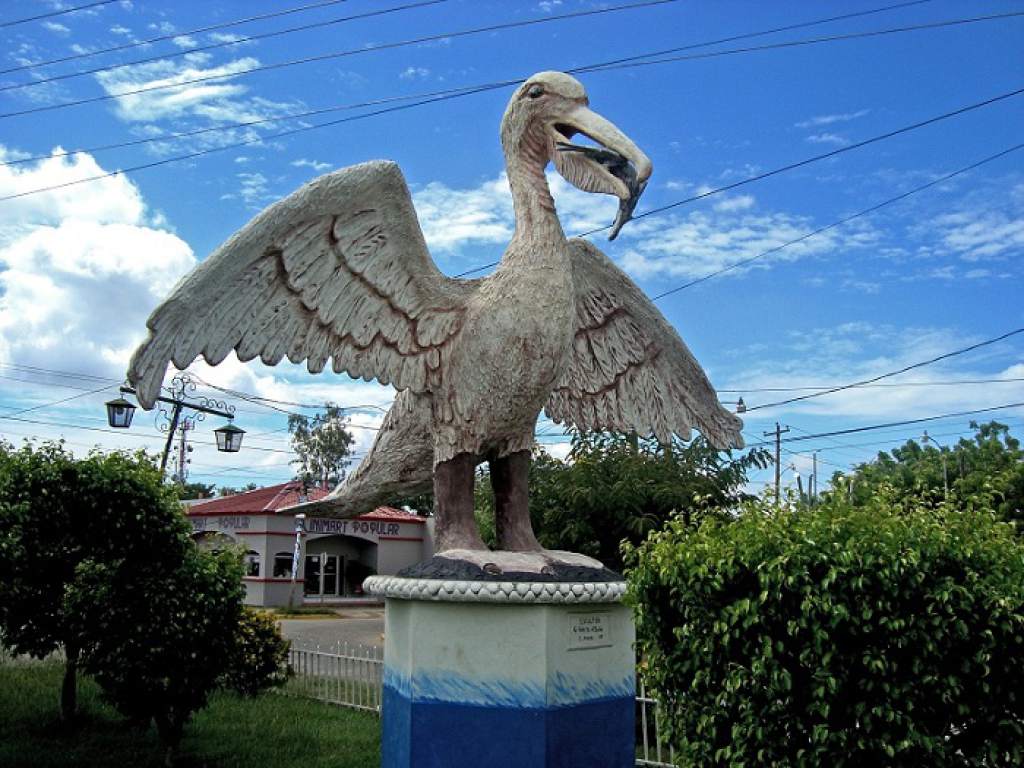
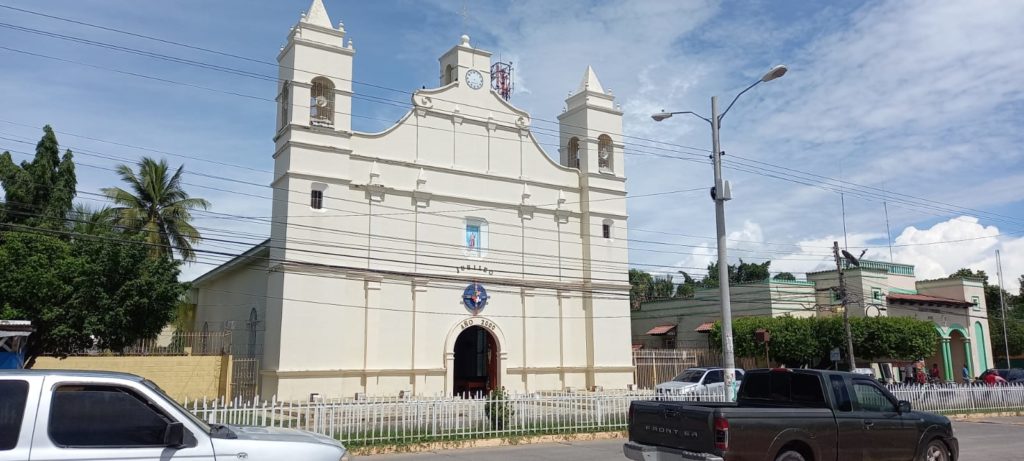

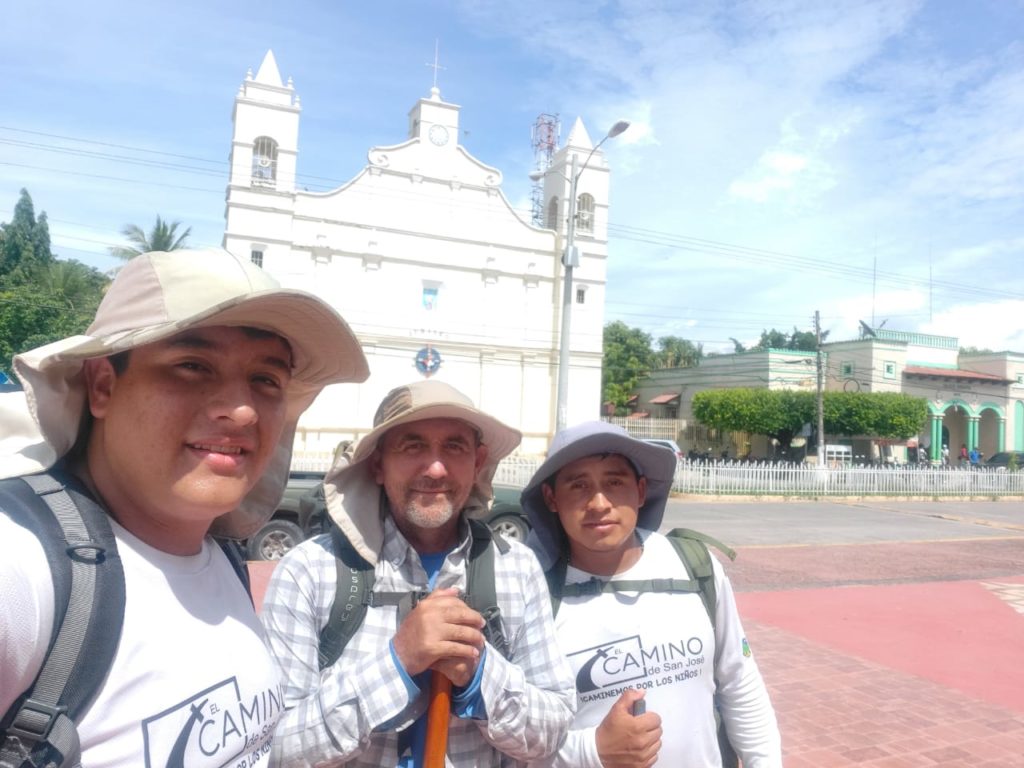
Beautiful pictures! Who’s the photographer?
I think mostly Fr. Miguel and Eduardo, although some are stock photos from the internet.
It looks so clean and bright…. buildings so white, Is that cleaning or the sun cooking things clean?
I think that’s mostly the sun, although these buildings are usually whitewashed. Left alone, they apparently turn more of a salmon color.